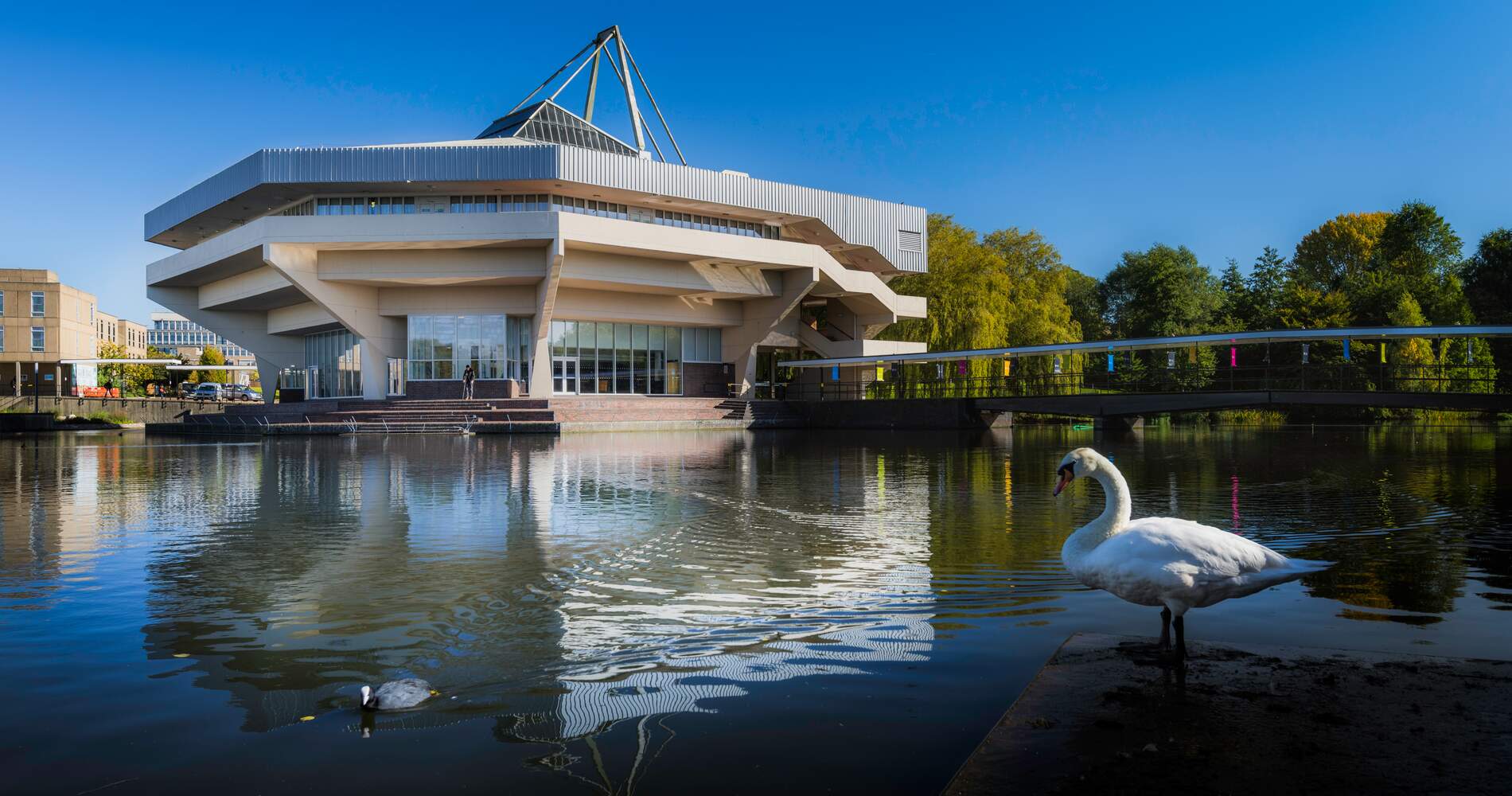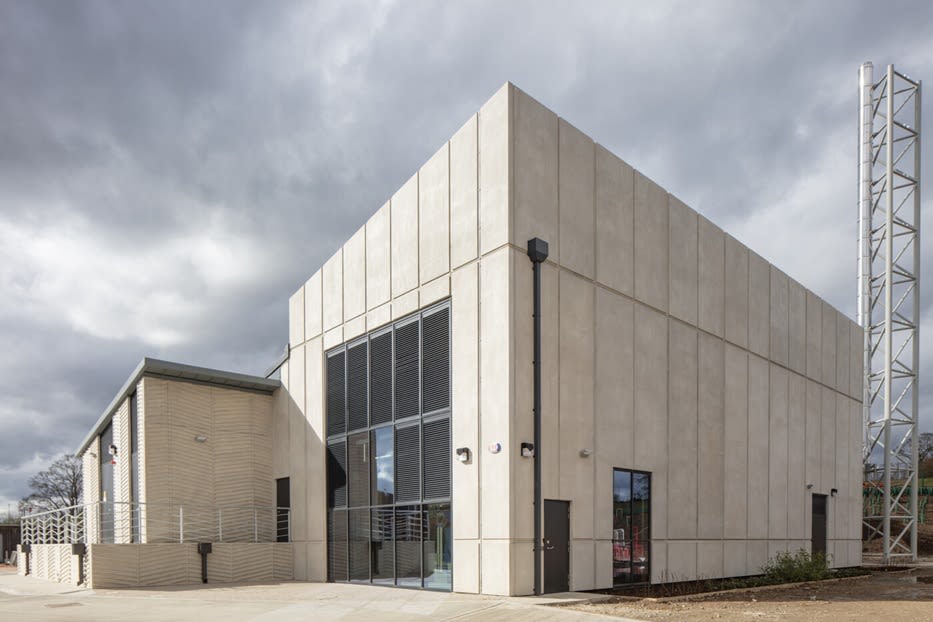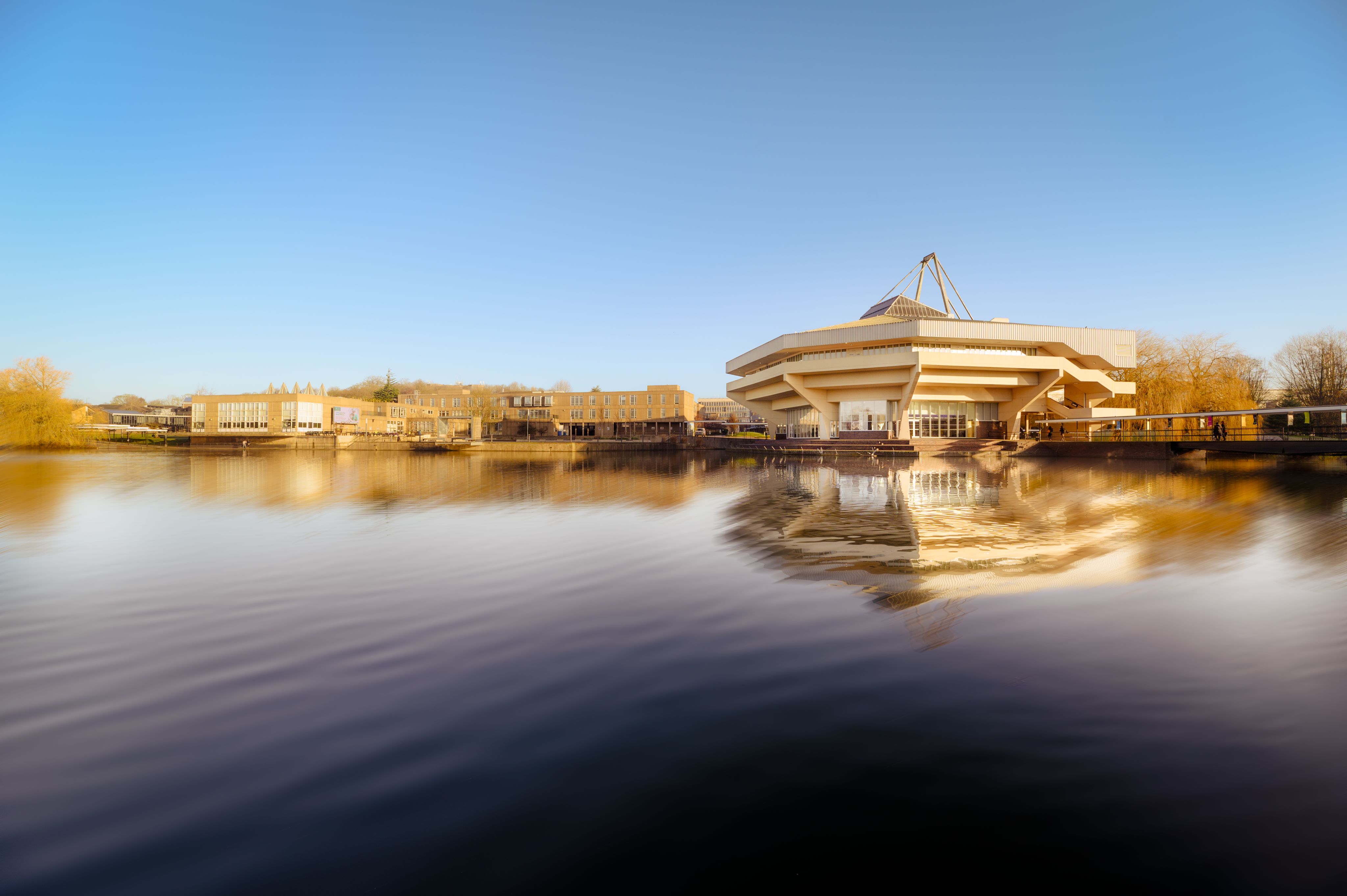University of York Infrastructure Decarbonisation Plan 2025 - 2030

Introduction
In 2021 we launched our ambitious Sustainability Plan.
The Climate Action section of the plan contains a goal for the University to be Carbon Net Zero on Scope 1 and 2 emissions by 2030, an ambitious challenge, but one that we are committed to achieving. The purpose of this document is to set out the current context of the University infrastructure and the future plans to assist in meeting this ambition.
A £50m investment has already been committed, supported by a £35m grant from the Public Sector Decarbonisation Scheme, with an ambition to reduce Scope 1 and 2 emissions by 70%.
1.1 UNIVERSITY ESTATE
The University has approximately 500 buildings spread across Campus West, Campus East and Kings Manor sites. These buildings can be broadly placed into 4 categories based on the development of the University, these include:
- Pre-1945/Historic.
- 1960s Campus West Development.
- 1980s Campus West Extension.
- Post-2000 development Campus East and Campus West.
The University has long-term land lease agreements and partnerships with third parties for student accommodation. These arrangements along with the development phases pose a range of challenges associated with decarbonisation, including listed buildings, inefficient legacy buildings and ongoing collaboration with strategic partners.
1.2 University Infrastructure
The University of York's Campus East and West are powered by two Energy Centres. Heat is supplied via a district heating network (DHN) to the majority of campus buildings, with approximately 340 standalone gas boilers providing heat to other buildings not on the network. The majority of heat and power on the University Estate is produced by 3 Combined Heat and Power Plants located in the Energy Centres.
Renewable energy production includes around 1,500 solar panels with an expected 730 kWp/year output (as of May 2025). The University supplements its energy needs with purchased low-carbon grid electricity. Currently, on-site CHP generation covers 80-90% of electricity consumption, with the rest imported from the grid.

2.0 Decarbonisation Principles
The University Executive Board has approved a range of principles that will guide the approach to decarbonisation, which are listed below:
- Reduce the size of the estate to reduce demand on heating / power.
- New buildings - Net Zero in operation and construction.
- Increase the energy efficiency of buildings - fabric first improvements.
- Increase the energy efficiency of buildings - optimisation improvements.
- Behavioural change within the University community.
- Move to electrification of the estate - away from gas heating.
- Renewable technology and infrastructure - energy production.
- ‘Insetting’ the remaining carbon emissions, with external offsetting as a final resort.
These guiding principles will be used to inform future development, maintenance and repair of the Estate to ensure that decarbonisation is built into all potential interventions made.

3.0 Baseline Data
The baseline carbon data for this plan has been taken from a 2017-2019 average, Figure 4 provides the breakdown across Scope 1, 2 and 3 emissions.
Table 1 provides the carbon reporting data since the commencement of the Sustainability Plan in 2021,
|
Year |
Scope 1 |
Scope 2 |
Scope 3 |
|---|---|---|---|
|
2017-2019 average baseline |
20,647 |
5,982 |
91,320 |
|
2020-2021 |
21,347 |
3,240 |
53,775 |
|
2021-2022 |
18,953 |
4,018 |
77,637 |
|
2022-2023 |
20,049 |
3,779 |
89,356 |
|
2023-2024 |
21,780 |
2,346 |
86,328 |
Table 1. Annual Carbon Figures for Scope 1, 2 and 3 Emissions (tCO2e) (2021-2024)
4.0 Decarbonisation Pathway Overview
The decarbonisation schemes within this plan will be assigned against 4 options:
Option 1 - Business as usual and wait for external factors to materialise e.g. grid decarbonisation and alternatives to natural gas.
Option 2 - Decarbonisation Pathway based on the current Net Zero budget allocation, plus changes to external factors.
Option 3 - As 2, but also including currently unfunded renewable electricity opportunities, as well as fully resourcing a behavioural change engagement plan.
Option 4 - As 3, but incorporating the Deep Geothermal Project, as well stricter policy and behaviour change participation.
Within these options, interventions for the Scope 1 and 2 decarbonisation can be split into 3 categories outlined here:
These key elements will form the basis of this decarbonisation plan and associated pathway. To achieve the Net Zero target any generated carbon emissions remaining after these options have been implemented will be subject to an agreed off-setting or in-setting strategy.
4.1 Option 1 - Business As Usual
This approach relies on developments outside of the control of the University to reduce carbon emissions.
The primary factor for Option 1 is the decarbonisation of the external power grid. Projections to 2030 show a potential 25% reduction in the carbon intensity of the grid, which will improve the carbon factor associated with imported electricity.
In the context of the University, given that the majority (approximately 80%) of electricity is generated on campus through the CHP units, this will have a diminishing contribution to carbon reduction as the amount of renewable production increases on campus.
Further future external developments may include the replacement or mixing of alternative sources of gas within the gas network, such as Hydrogen. It is not anticipated that this will be an option for the University network within the next 15-20 years.
4.2 Option 2 - Current Budget Options
The University has allocated a dedicated £10 million budget over the next five years to support decarbonisation initiatives. The Net Zero budget will be supported through other work on the Estate associated with development and maintenance to improve building performance and associated long term carbon emissions.
Currently the budget is distributed across various projects, including:
- LED lighting upgrades
- Solar PV installation
- Building fabric upgrades
- Infrastructure and heating optimisation
- IT server room upgrades
Planned Solar PV projects will increase the campus's total generation capacity to 1 MWp, this will primarily be situated on Campus West due to the demand constraints described on Campus East. This is near the limit of generation capacity allowed under current agreements with Northern PowerGrid. The additional solar capacity will help manage peak electricity demand on campus, reducing reliance on imported grid electricity.
Other projects, such as LED lighting upgrades and building fabric improvements, as well as behavioural change programmes will contribute to reducing the overall electricity demand on campus.
Other projects, such as LED lighting upgrades and building fabric improvements, as well as behavioural change programmes will contribute to reducing the overall electricity demand on campus.
Options described within this section will be delivered in full through the delivery of the decarbonisation plan.
4.3 Option 3 - Additional Renewable Electrical Energy Capacity
This section will describe options for additional renewable electricity capacity in addition to that be delivered through Option 2.
The options within this section account for large scale Solar PV or additional generation through Wind Turbines.
The current option for solar PV includes the installation of a 1.25 MW, to be located on land adjacent to Campus East, providing an estimated annual production of 1.16GWh and an associated carbon saving of 230 tonnes.
The current option for wind generation includes the installation of a 900kW Wind Turbine on Campus East, providing an estimated annual production of 1.3 GWh and an associated annual carbon saving of 230 tonnes.
There is currently no funding allocated to these projects and detailed feasibility work will be required to confirm how these technologies will interface with the existing network, particularly the replacement of heat production through the CHPs.
It is also recognised that there will be interventions that will increase the demand on energy on campus, such as the requirement to provide EV charging points and the provision of new facilities, which may reduce some of the demand issues.
4.4 Option 4 - Replacement of Heat Source for District Heating Main
Option 4 includes the replacement of the heat source for the district heating main, moving away from the reliance on natural gas and the use of the CHP units. The replacement of the CHP heat source will reduce the gas demand on campus by approximately 65%. The remainder of heating is made up from individual gas boilers on campus, which will be addressed after the implementation of Option 4.
The replacement of the heat source would reduce Scope 1 emissions by approximately 70%, which will be achieved through the delivery of the Deep Geothermal Project.
4.5 Offsetting / Insetting Residual Emissions
Even if the most significant interventions across all of the options are implemented there will be some remaining carbon emissions generated. To achieve the target of being carbon Net Zero the University would need to balance these residual emissions, which will be achieved through a carbon off-setting or insetting strategy.
‘Carbon Insetting’ is similar to ‘Carbon Offsetting’ but instead of investing in external projects, insetting would relate to investing in the value / supply chain of the University to provide a more direct impact (including our own scope 3 emissions) and increased collaboration with our stakeholders. Insetting would require more work for the University and potentially not have the same certification and validation processes.
Another option is to invest the money we would otherwise spend on offsetting / insetting the residual carbon emissions directly into operational projects on campus to reduce our direct Scope 1 and 2 emissions.
The University will develop policy relating to off-setting ahead of the 2030 target date.





5.0 Governance and Reporting Mechanisms
The Sustainability Steering Group (SSG) provides strategic leadership for the implementation and delivery of the University Sustainability Plan.
The Group has the responsibility for defining the overarching vision for sustainability at the University and makes recommendations to the University Executive Board (UEB) for Council approval. It is the central governing and oversight group for sustainability at the University. The Group develops and oversees the implementation of the University Sustainability Plan ensuring alignment with University Strategy.
UEB has approved this Decarbonisation Plan.
SSG has assigned responsibility for the delivery of this Decarbonisation Plan to the Net Zero Project Board. The Net Zero Project Board is responsible for the development, monitoring and oversight of the Net Zero Programme. The Net Zero Project Board is a sub-group of the Integrated Infrastructure Board (IIB) and will make recommendations on the programme of work for approval on an annual basis and provide updates as required by the IIB schedule of business.
The Board will have overall responsibility for approving initiatives, projects and programmes of work associated with the decarbonisation of University infrastructure. It will also seek to establish the campus as a ‘Living Lab’ harnessing expertise from within the University and through strategic partnerships to accelerate progress with decarbonisation.
For a full copy of the decarbonisation plan, please contact Sustainability.
The University of York Carbon Plan 2025 - 2030 can be viewed and downloaded here. [LINK]
